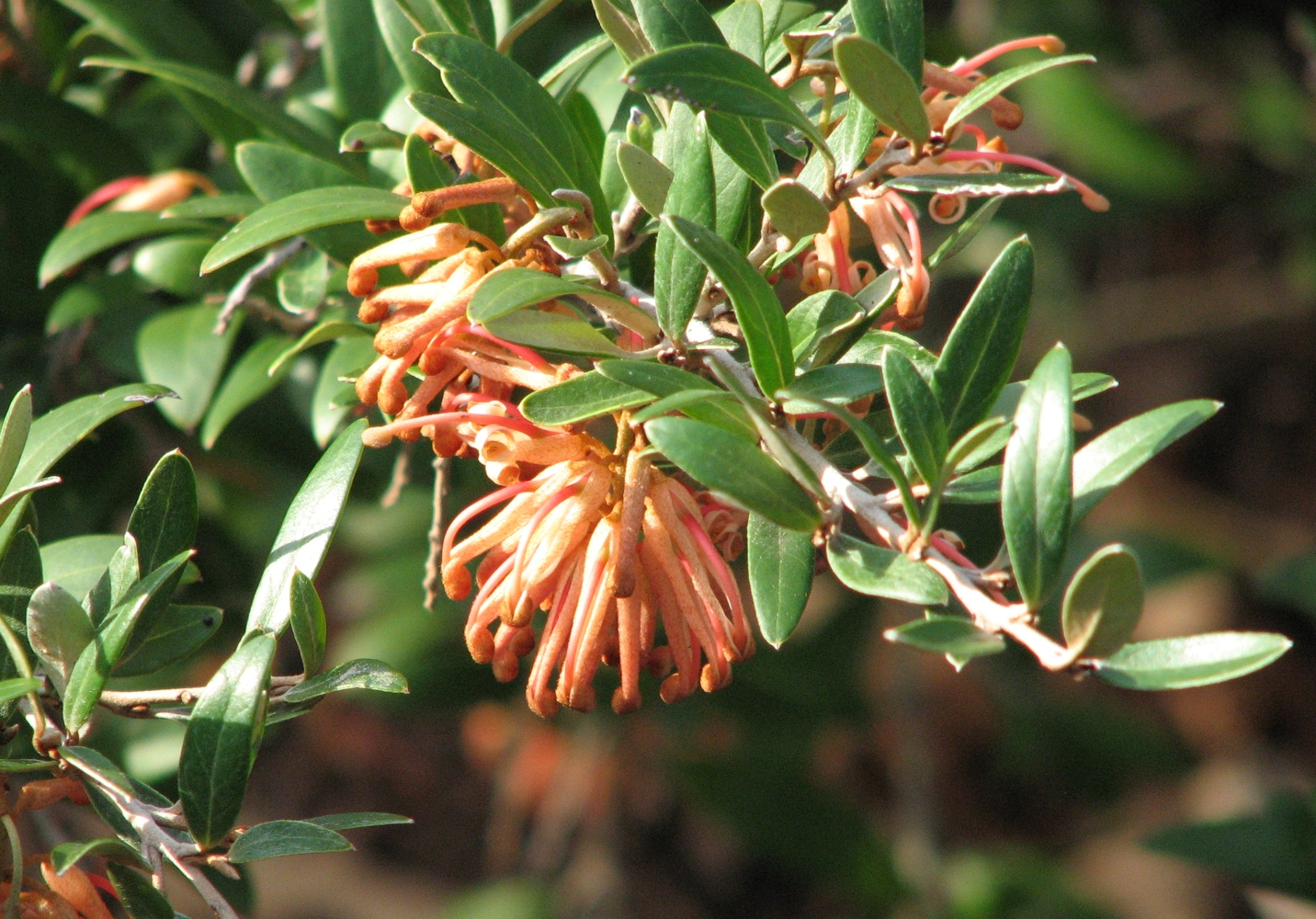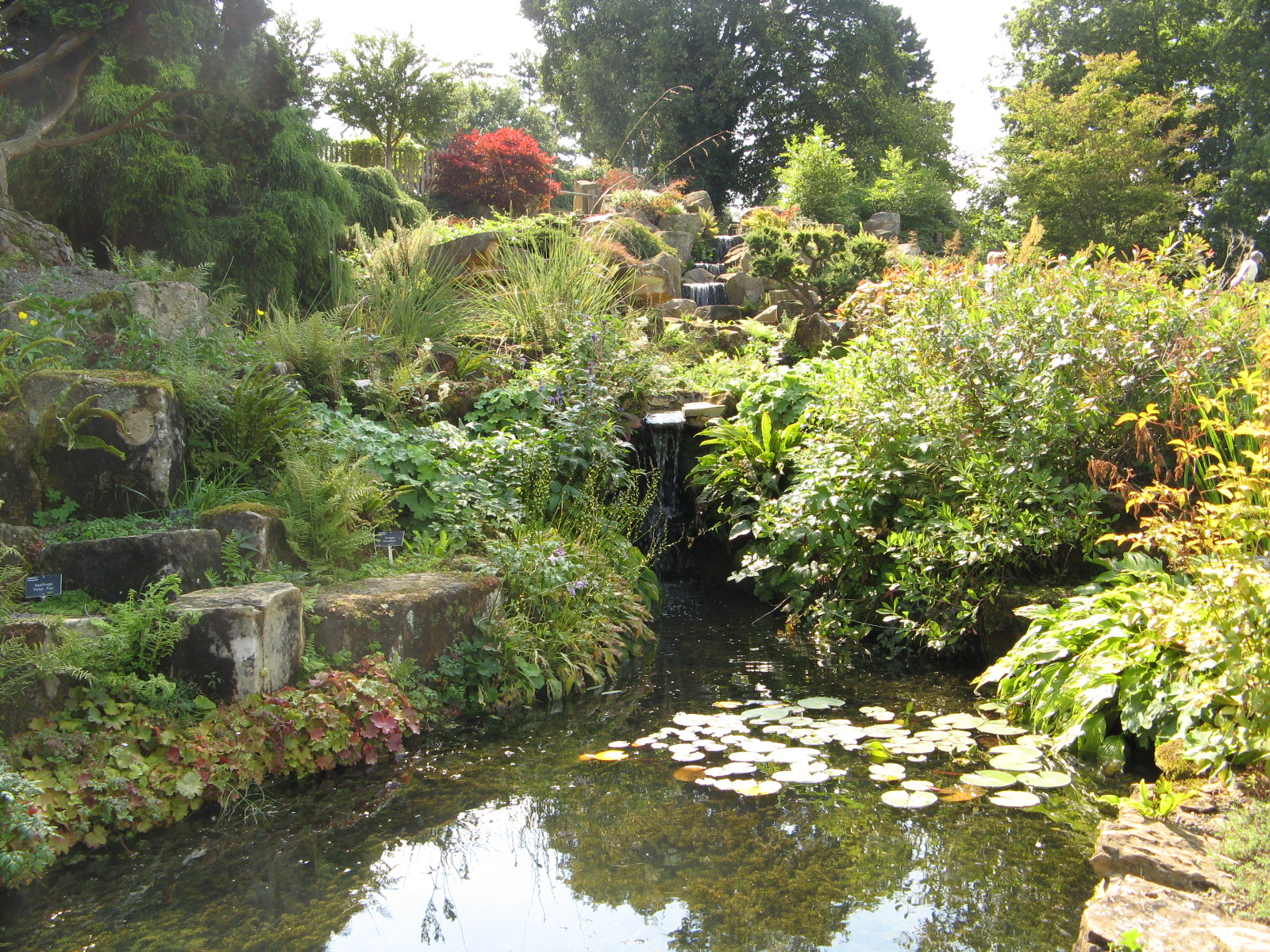|
Grevillea Lanigera 'Mt Tamboritha'
''Grevillea lanigera'' 'Mt Tamboritha' is a cultivar of the genus '' Grevillea'', planted widely in Australia and other countries for its ornamental foliage and flowers. It is the most popular form of ''Grevillea lanigera'' in cultivation. It is also known by the names 'Mt Tamboritha form', 'Compacta', 'Prostrate', 'Prostrate Form' or the misnomer 'Mt Tambourine'. Description The cultivar is a spreading, low shrub that grows to 0.4 metres in height and 1 to 2 metres wide. The overall appearance of the foliage is dense and dark green with a silvery sheen from the fine hairs. The leaves, which are narrow and oblong, are notably smaller than most forms of the species. These are arranged spirally on the arching, wiry stems. Flowers are pinkish-red and cream and appear in clusters. The primary flowering period is from late winter to spring, though flowers may be seen throughout the year. Origin The cultivar was introduced by plantsman Bill Cane. Despite being widely known as the "Mo ... [...More Info...] [...Related Items...] OR: [Wikipedia] [Google] [Baidu] |
Grevillea Lanigera
''Grevillea lanigera'', commonly known as woolly grevillea, is a species of flowering plant in the family Proteaceae and is endemic to south-eastern continental Australia. It is a spreading shrub with narrowly oblong to more or less linear leaves and clusters of pink to red, and cream-coloured flowers. Description ''Grevillea lanigera'' is usually a spreading shrub that typically grows to a height of , sometimes a dense rounded shrub to high. Its leaves are narrowly oblong to more or less linear, long and wide, with the edges turned down or rolled under. The lower surface of the leaves is shaggy-hairy. The flowers are arranged in clusters of two to ten on a rachis long and are pale pink to red and cream-coloured. The style is shaggy- or woolly-hairy except near its tip, the pistil long and hairy inside. Flowering mainly occurs from July to December, but flowers are sometimes present in other months. The fruit is a shaggy-hairy, elliptic to oblong follicle long. Taxonomy ... [...More Info...] [...Related Items...] OR: [Wikipedia] [Google] [Baidu] |
Brisbane
Brisbane ( ) is the capital and most populous city of the states and territories of Australia, Australian state of Queensland, and the list of cities in Australia by population, third-most populous city in Australia and Oceania, with a population of approximately 2.6 million. Brisbane lies at the centre of the South East Queensland metropolitan region, which encompasses a population of around 3.8 million. The Brisbane central business district is situated within a peninsula of the Brisbane River about from its mouth at Moreton Bay, a bay of the Coral Sea. Brisbane is located in the hilly floodplain of the Brisbane River Valley between Moreton Bay and the Taylor Range, Taylor and D'Aguilar Range, D'Aguilar mountain ranges. It sprawls across several local government in Australia, local government areas, most centrally the City of Brisbane, Australia's most populous local government area. The demonym of Brisbane is ''Brisbanite''. The Traditional Owners of the Brisbane a ... [...More Info...] [...Related Items...] OR: [Wikipedia] [Google] [Baidu] |
Cultivars Of Australian Plants
A cultivar is a type of cultivated plant that people have selected for desired traits and when propagated retain those traits. Methods used to propagate cultivars include: division, root and stem cuttings, offsets, grafting, tissue culture, or carefully controlled seed production. Most cultivars arise from purposeful human manipulation, but some originate from wild plants that have distinctive characteristics. Cultivar names are chosen according to rules of the International Code of Nomenclature for Cultivated Plants (ICNCP), and not all cultivated plants qualify as cultivars. Horticulturists generally believe the word ''cultivar''''Cultivar'' () has two meanings, as explained in '' Formal definition'': it is a classification category and a taxonomic unit within the category. When referring to a taxon, the word does not apply to an individual plant but to all plants that share the unique characteristics that define the cultivar. was coined as a term meaning "cultivated vari ... [...More Info...] [...Related Items...] OR: [Wikipedia] [Google] [Baidu] |
Grevillea Cultivars
This is a list of cultivars of the plant genus '' Grevillea''. A to E F to J K to O P to R S to Z See also * Lists of cultivars * Ornamental plant References {{DEFAULTSORT:Grevillea cultivars Grevillea *Grevillea Grevillea Lists of cultivars ... [...More Info...] [...Related Items...] OR: [Wikipedia] [Google] [Baidu] |
List Of Grevillea Cultivars
This is a list of cultivars of the plant genus ''Grevillea''. A to E F to J K to O P to R S to Z See also * Lists of cultivars * Ornamental plant References {{DEFAULTSORT:Grevillea cultivars Grevillea cultivars, Lists of plants of Australia, Grevillea Garden plants of Australia, *Grevillea Drought-tolerant plants, Grevillea Lists of cultivars ... [...More Info...] [...Related Items...] OR: [Wikipedia] [Google] [Baidu] |
Cuttings (plant)
A plant cutting is a piece of a plant that is used in horticulture for vegetative (asexual) propagation. A piece of the stem or root of the source plant is placed in a suitable medium such as moist soil. If the conditions are suitable, the plant piece will begin to grow as a new plant independent of the parent, a process known as striking. A stem cutting produces new roots, and a root cutting produces new stems. Some plants can be grown from leaf pieces, called leaf cuttings, which produce both stems and roots. The scions used in grafting are also called cuttings. Propagating plants from cuttings is an ancient form of cloning. There are several advantages of cuttings, mainly that the produced offspring are practically clones of their parent plants. If a plant has favorable traits, it can continue to pass down its advantageous genetic information to its offspring. This is especially economically advantageous as it allows commercial growers to clone a certain plant to ensure consiste ... [...More Info...] [...Related Items...] OR: [Wikipedia] [Google] [Baidu] |
Sicily
(man) it, Siciliana (woman) , population_note = , population_blank1_title = , population_blank1 = , demographics_type1 = Ethnicity , demographics1_footnotes = , demographics1_title1 = Sicilian , demographics1_info1 = 98% , demographics1_title2 = , demographics1_info2 = , demographics1_title3 = , demographics1_info3 = , timezone1 = CET , utc_offset1 = +1 , timezone1_DST = CEST , utc_offset1_DST = +2 , postal_code_type = , postal_code = , area_code_type = ISO 3166 code , area_code = IT-82 , blank_name_sec1 = GDP (nominal) , blank_info_sec1 = €89.2 billion (2018) , blank1_name_sec1 = GDP per capita , blank1_info_sec1 ... [...More Info...] [...Related Items...] OR: [Wikipedia] [Google] [Baidu] |
Phytophthora Palmivora
''Phytophthora palmivora'' is an oomycete that causes bud-rot of palms, fruit-rot or kole-roga of coconut and areca nut. These are among the most serious diseases caused by fungi and moulds in South India. It occurs almost every year in Malnad, Mysore, North & South Kanara, Malabar and other areas. Similar diseases of palms are also known to occur in Sri Lanka, Mauritius, and Sumatra. The causative organism was first identified as ''Phytophthora palmivora'' by Edwin John Butler in 1917.Tucker, C.M. (1931) ''Taxonomy of the genus ''Phytophtora'' de Bary'' University of Missouri Agricultural Experiment Station Research Bulletin 153; Biology ''Phytophthora palmivora'' produces abundant sporangia on V-8 agar under continuous fluorescent light. However, light is not required for sporangia production on infected papaya fruit. Sporangia are usually produced in clusters sympodially. Sporangia are papillate and ovoid with the widest part close to the base. They are easily washed off ... [...More Info...] [...Related Items...] OR: [Wikipedia] [Google] [Baidu] |
Rockery
A rock garden, also known as a rockery and formerly as a rockwork, is a garden, or more often a part of a garden, with a landscaping framework of rocks, stones, and gravel, with planting appropriate to this setting. Usually these are small Alpine plants that need relatively little soil or water. Western rock gardens are often divided into alpine gardens, scree gardens on looser, smaller stones, and other rock gardens. Some rock gardens are planted around natural outcrops of rock, perhaps with some artificial landscaping, but most are entirely artificial, with both rocks and plants brought in. Some are designed and built to look like natural outcrops of bedrock. Stones are aligned to suggest a bedding plane, and plants are often used to conceal the joints between said stones. This type of rockery was popular in Victorian times and usually created by professional landscape architects. The same approach is sometimes used in commercial or modern-campus landscaping but can also ... [...More Info...] [...Related Items...] OR: [Wikipedia] [Google] [Baidu] |
Cultivar
A cultivar is a type of cultivated plant that people have selected for desired traits and when propagated retain those traits. Methods used to propagate cultivars include: division, root and stem cuttings, offsets, grafting, tissue culture, or carefully controlled seed production. Most cultivars arise from purposeful human manipulation, but some originate from wild plants that have distinctive characteristics. Cultivar names are chosen according to rules of the International Code of Nomenclature for Cultivated Plants (ICNCP), and not all cultivated plants qualify as cultivars. Horticulturists generally believe the word ''cultivar''''Cultivar'' () has two meanings, as explained in '' Formal definition'': it is a classification category and a taxonomic unit within the category. When referring to a taxon, the word does not apply to an individual plant but to all plants that share the unique characteristics that define the cultivar. was coined as a term meaning "cultivated vari ... [...More Info...] [...Related Items...] OR: [Wikipedia] [Google] [Baidu] |
Australian Cultivar Registration Authority
The Australian Cultivar Registration Authority (ACRA) is the International Cultivar Registration Authority (ICRA) for Australian plant genera, excluding those genera or groups for which other ICRAs have been appointed. It is a committee of representatives of each state's botanic gardens, the Society for Growing Australian Plants, and the Nursery Industry Association of Australia. Founded in 1963, it is responsible for the registration and publication of cultivar names of Australian native plants, in accordance with the International Code of Nomenclature for Cultivated Plants The ''International Code of Nomenclature for Cultivated Plants'' (ICNCP), is a guide to the rules and regulations for naming cultigens, plants whose origin or selection is primarily due to intentional human activity. It is also known as Cultivate .... It also advises on plant breeders rights, and registers plant varieties declared under the Plant Breeder's Rights Act 1994. References {{reflist Bu ... [...More Info...] [...Related Items...] OR: [Wikipedia] [Google] [Baidu] |
Wilsons Promontory
Wilsons Promontory, is a peninsula that forms the southernmost part of the Australian mainland, located in the state of Victoria. South Point at is the southernmost tip of Wilsons Promontory and hence of mainland Australia. Located at nearby South East Point, () is the Wilsons Promontory Lighthouse. Most of the peninsula is protected by the Wilsons Promontory National Park and the Wilsons Promontory Marine National Park. Human history Wilsons Promontory was first occupied by indigenous Koori people at least 6,500 years prior to European arrival. Middens along the western coast indicate that the inhabitants subsisted on a seafood diet. The first European to see the promontory was George Bass in January 1798. He initially referred to it as "Furneaux's Land" in his diary, believing it to be what Captain Furneaux had previously seen. But on returning to Port Jackson and consulting Matthew Flinders he was convinced that the location was so different it could not be ... [...More Info...] [...Related Items...] OR: [Wikipedia] [Google] [Baidu] |


.jpg)




